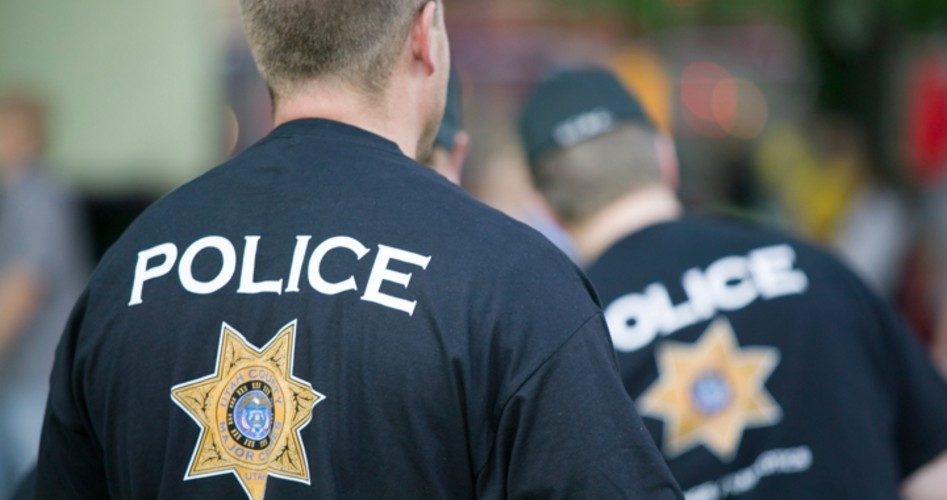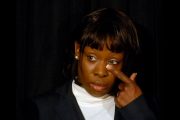
New York City Mayor Bill de Blasio is notorious for giving his black son “the talk” — a warning about how his race will cause police to react to him. But it now appears his talk should have been in the nature of a reassurance, because a scientific study indicates that police are actually less likely to shoot black suspects.
The study, out of Washington State University (WSU), was conducted by lead researcher Professor Lois James and her collaborators, professors David Klinger and Bryan Vila. First published online May 22, 2014 in the Journal of Experimental Criminology, it was largely ignored but has taken on new relevance in the wake of the recently publicized deaths of black criminal suspects in confrontations with police. As to its findings, WSU News writes:
Participants in an innovative Washington State University study of deadly force were more likely to feel threatened in scenarios involving black people. But when it came time to shoot, participants were biased in favor of black suspects, taking longer to pull the trigger against them than against armed white or Hispanic suspects.
… The findings … run counter to the public perception, heightened with the recent shooting of Michael Brown in Ferguson, Mo., that police are more willing to shoot black suspects.
… James’ study is a follow-up to one in which she found active police officers, military personnel and the general public took longer to shoot black suspects than white or Hispanic suspects. Participants were also more likely to shoot unarmed white suspects than black or Hispanic ones and more likely to fail to fire at armed black suspects.
“In other words,” wrote James and her co-authors, “there was significant bias favoring blacks where decisions to shoot were concerned.”
When confronted by an armed white person, participants took an average of 1.37 seconds to fire back. Confronted by an armed black person, they took 1.61 seconds to fire and were less likely to fire in error. The 240-millisecond difference may seem small, but it’s enough to be fatal in a shooting.
While the media might lead one to believe otherwise, more whites than blacks are killed by police every year. As The New American reported Monday quoting pundit Larry Elder, “In 2012, according to the CDC, 140 blacks were killed by police. That same year 386 whites were killed by police. Over the 13-year period from 1999 to 2011, the CDC reports that 2,151 whites were killed by cops — and 1,130 blacks were killed by cops.”
Of course, this isn’t surprising given that while non-Hispanic whites constitute 63 percent of the United States population, blacks are only 13 percent. Yet blacks are also overrepresented in crime statistics, committing more than half the nation’s homicides and an inordinate percentage of all violent offenses. As to how this relates to police shootings, Science Daily reported on the WSU research and wrote, “The last comprehensive look at the racial makeup of justifiable and non-justifiable shootings was a 2001 study (pdf) using more than two decades of U.S. Bureau of Justice data, said [Professor] James. And while statistics show black suspects are shot at more frequently than white suspects, the 2001 study found black suspects were also as likely to shoot at police as be shot at.”
Further refuting the narrative of anti-black police bias, the Washington Times’ Valerie Richardson quoted WSU study researcher David Klinger, a professor of criminology and criminal science at the University of Missouri-St. Louis, and wrote:
[Klinger said] black SWAT officers make up about one-third of the St. Louis force — and they commit on average about one-third of the shootings each year.
… “Once you start looking at levels of violence, levels of threat, blacks are not shot in manners that are disproportionate to their involvement in illegal activity,” he said. “And it doesn’t matter if the cop is black, white or Hispanic.
Yet, strictly speaking, blacks may be shot disproportionately — less frequently than their involvement in illegal activity might indicate. Explaining this phenomenon, the WSU researchers wrote in their paper:
There is some evidence from the field to support the proposition that an officer’s threat bias could cause him or her to tend to take more time to make decisions to shoot people whom they subconsciously perceived as more threatening because of race or ethnicity. This behavioral “counter-bias” might be rooted in people’s concerns about the social and legal consequences of shooting a member of a historically oppressed racial or ethnic group.
Discussion of a counter-bias favoring blacks extends at least as far back as the late 1970s, when Inn et al. (1977) reported that incident records from a major metropolitan police department showed that officers fired more shots per incident at white suspects than at black suspects. This finding led them to speculate that, “perhaps, police behave more cautiously with blacks because of departmental policy or public sentiment concerning treatment of blacks” (Inn et al. 1977: 35).
This certainly accords with research — involving hundreds of interviews with policemen — conducted independently by Professor Klinger, a former cop and author of the 2006 book Into the Kill Zone: A Cop’s Eye View of Deadly Force. As Richardson also wrote:
“Across these 300 interviews, I have multiple officers telling me that they didn’t shoot only because the suspect was black or the suspect was a woman, or something that would not be consistent with this narrative of cops out there running and gunning,” said Mr. Klinger….
“When it comes to the issue of race, I’ve never had a single officer tell me, ‘I didn’t shoot a guy because he was white.’ I’ve had multiple officers tell me, ‘I didn’t shoot a guy because he was black,’” Mr. Klinger said. “And this is 10, even 20 years ago. Officers are alert to the fact that if they shoot a black individual, the odds of social outcry are far greater than if they shoot a white individual.”
… “The second things is, I’ve had multiple officers tell me they were worried in the wake of a shooting because they shot a black person, and I’ve had multiple officers tell me that they were glad that the person they shot was white,” Mr. Klinger said. “Because then they knew they weren’t going to have to be subject to the racial harangue.”
Of course, now this harangue may include a president with a habit of making racially divisive comments (the Cambridge police “acted stupidly” and “If I had a son, he’d look like Trayvon”) and possible civil-rights charges by Eric Holder’s Department of Justice. And perhaps the resulting “counter-bias” is why, as Larry Elder also reported, that “in the last several decades the numbers of blacks killed by cops are down nearly 75 percent.”
The truth is that social, media, and governmental pressure has its effect. As to this, the WSU researchers present an interesting anecdote on page 17 of their paper involving an interview ex-Minneapolis police chief Anthony Bouza granted a member of the press:
[Bouza stated] that in most urban centers in the United States, when a police chief is called “at three in the morning and told, ‘Chief, one of our cops just shot a kid,’ the chief’s first questions are: ‘What color is the cop? What color is the kid?’” “And,” the reporter asked, “if the answer is, ‘The cop is white, the kid is black’?” “He gets dressed,” replied Bouza.
Unfortunately, the mainstream media is dressed to kill, cloaking reality in a racial narrative that places truth, justice, and domestic tranquility in the crosshairs.



